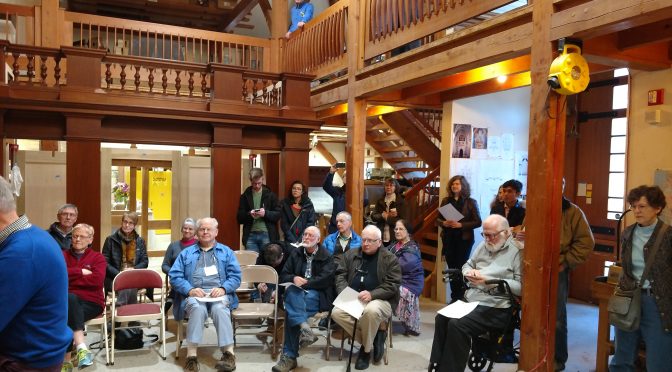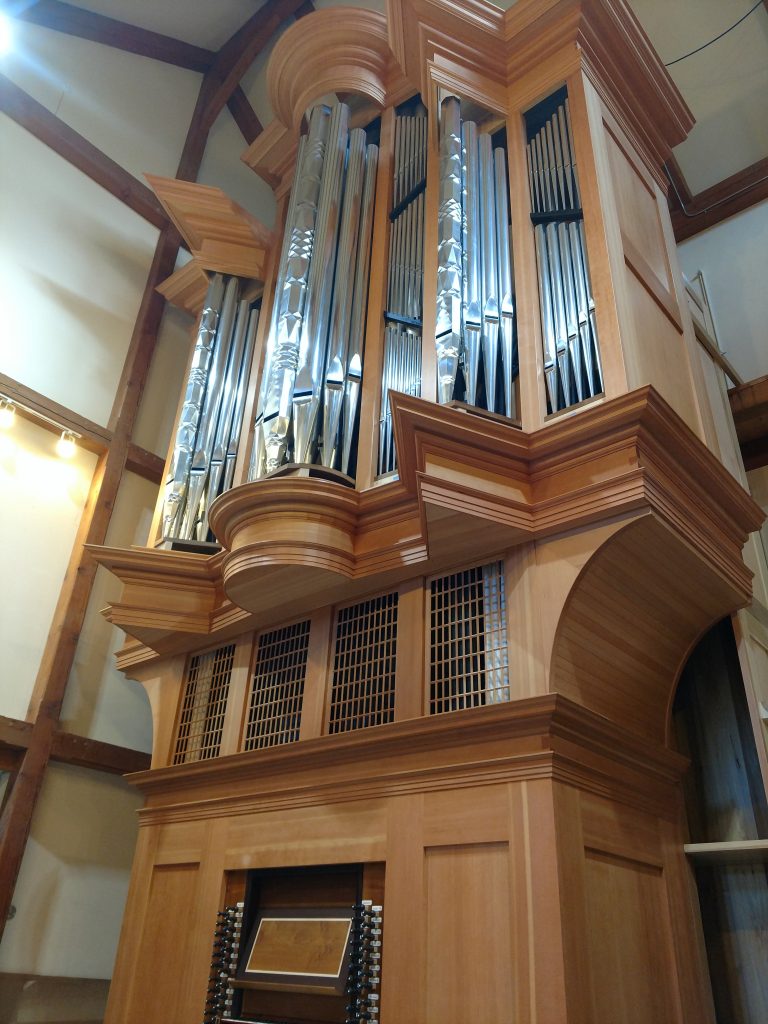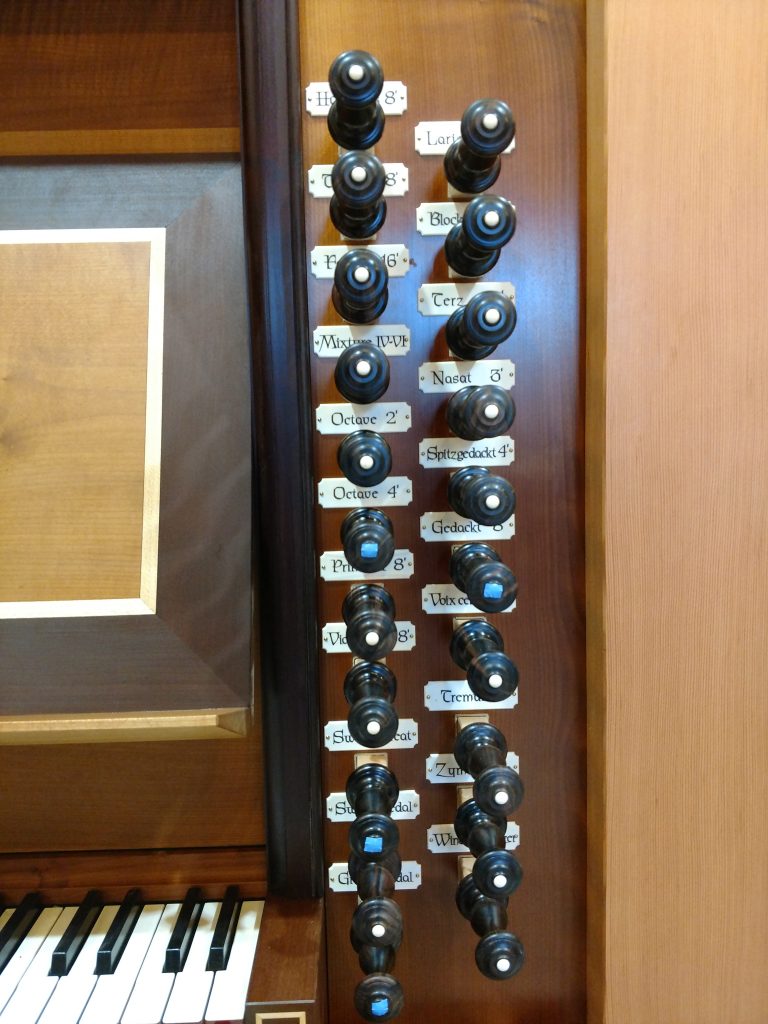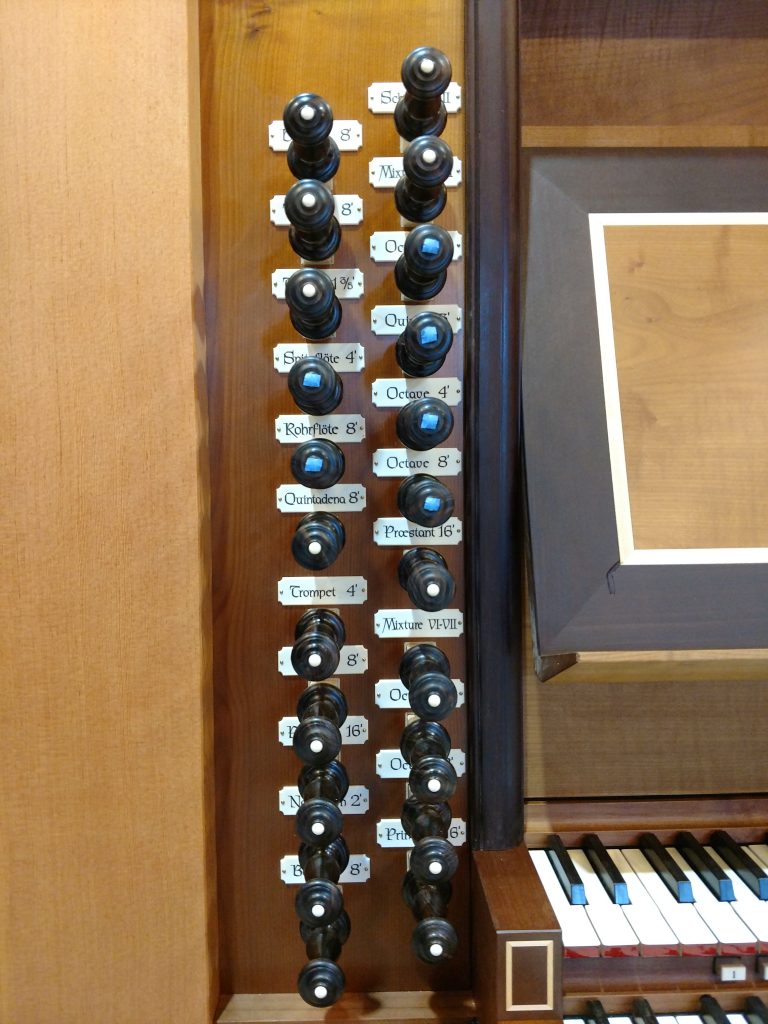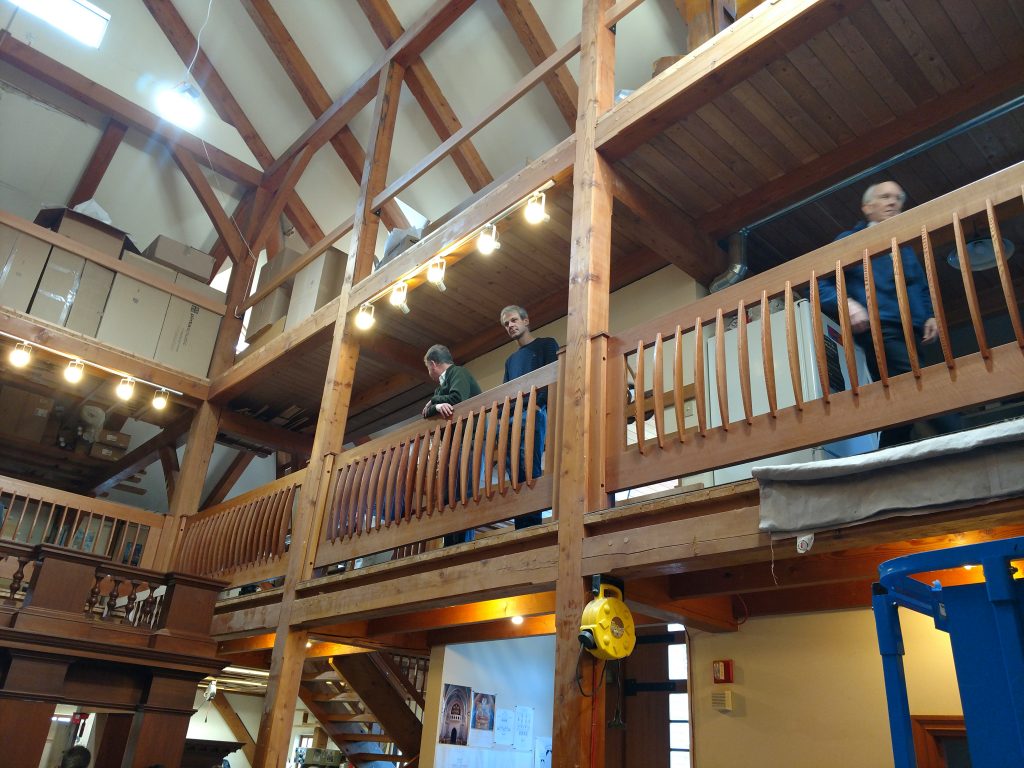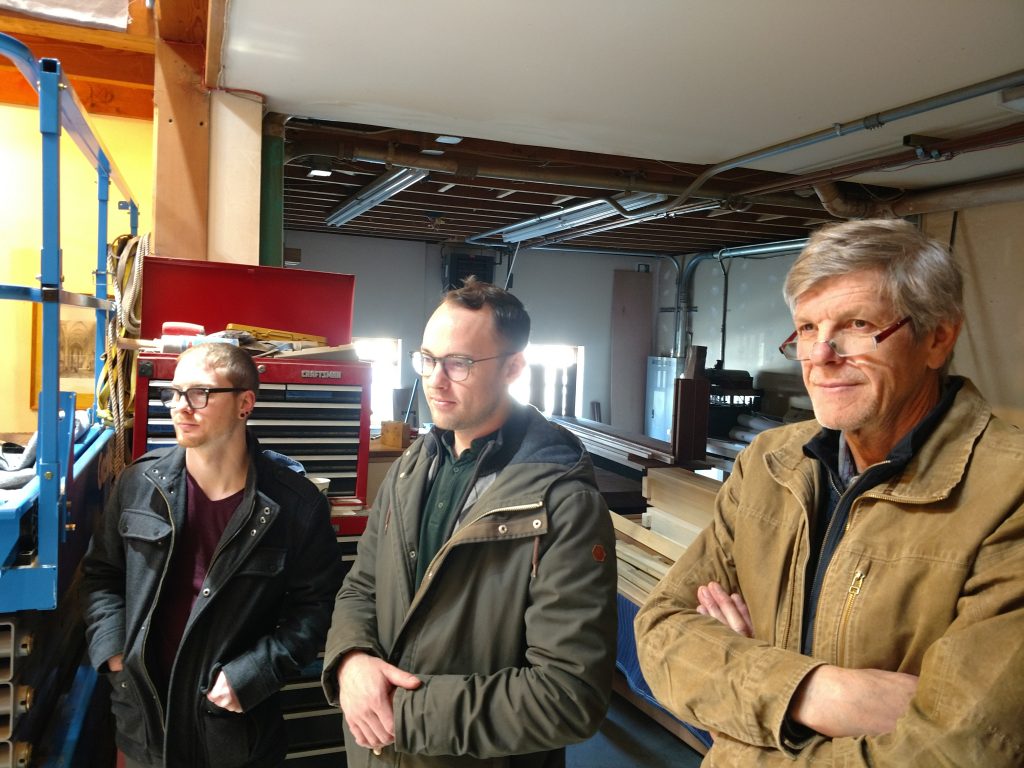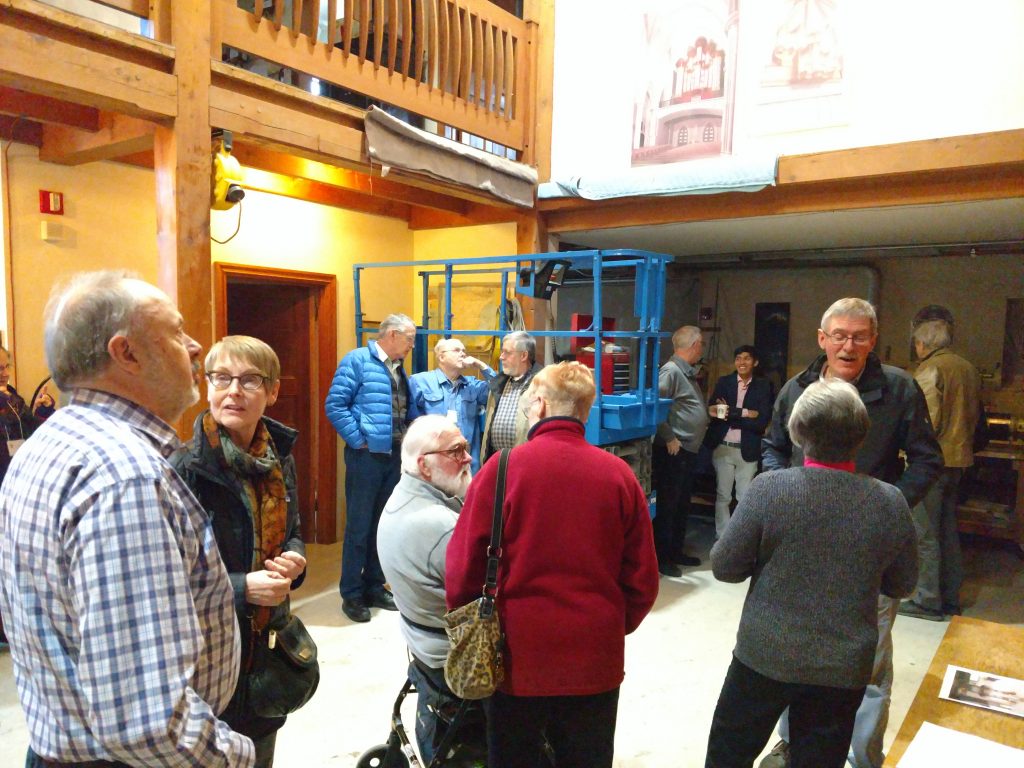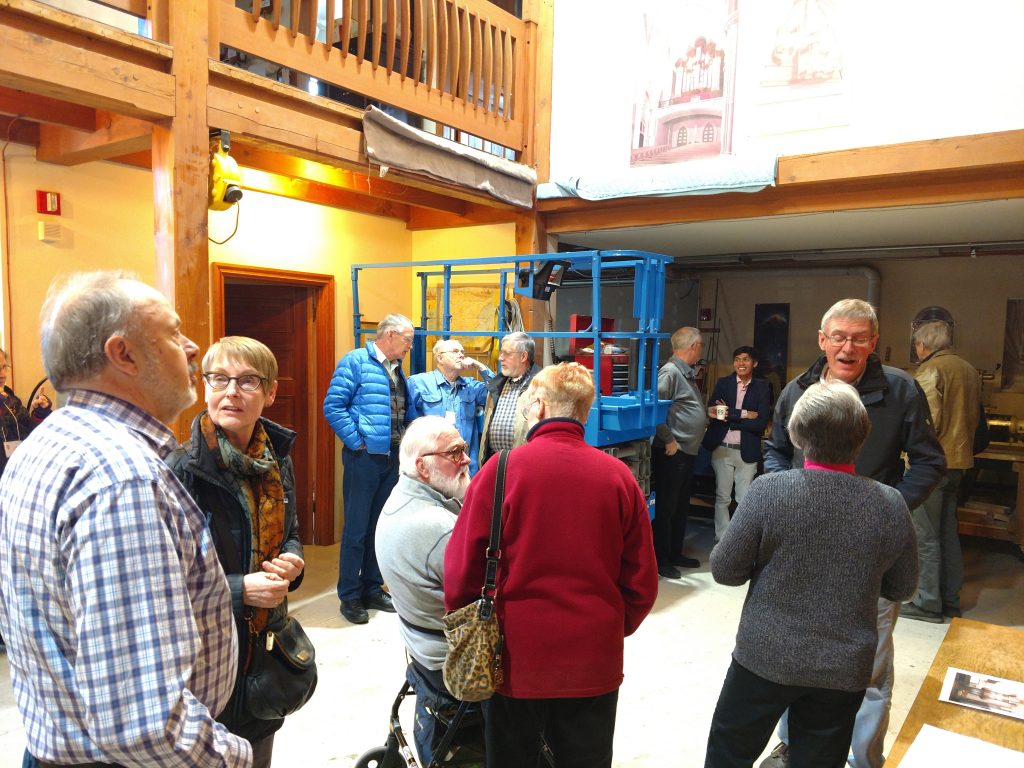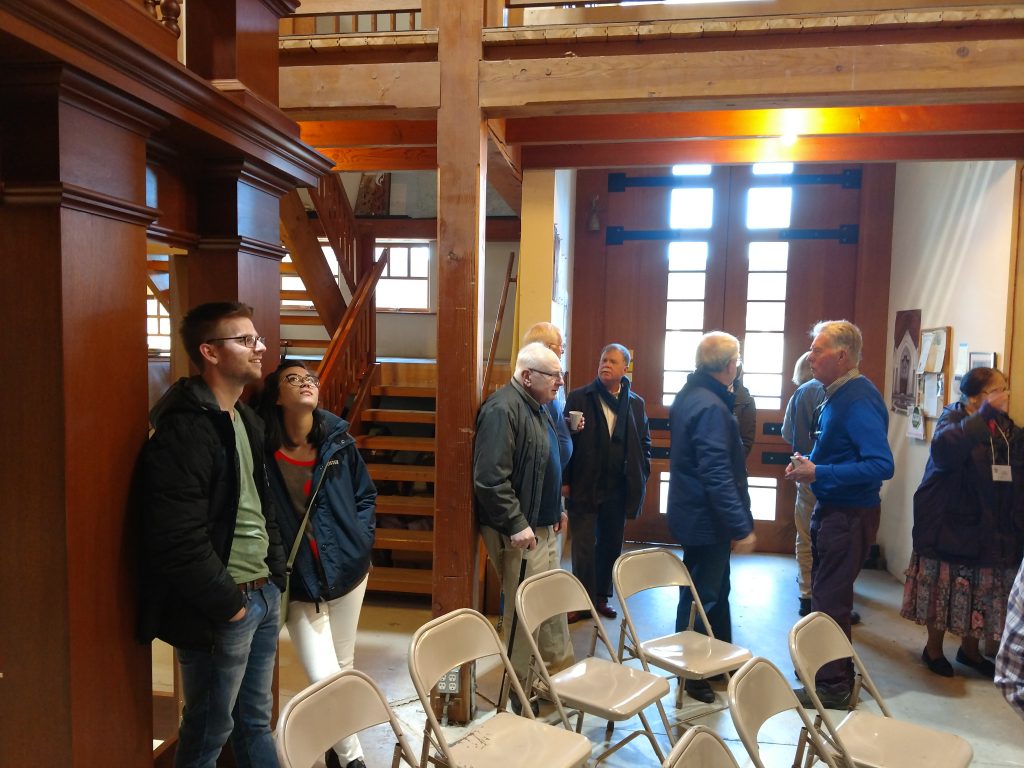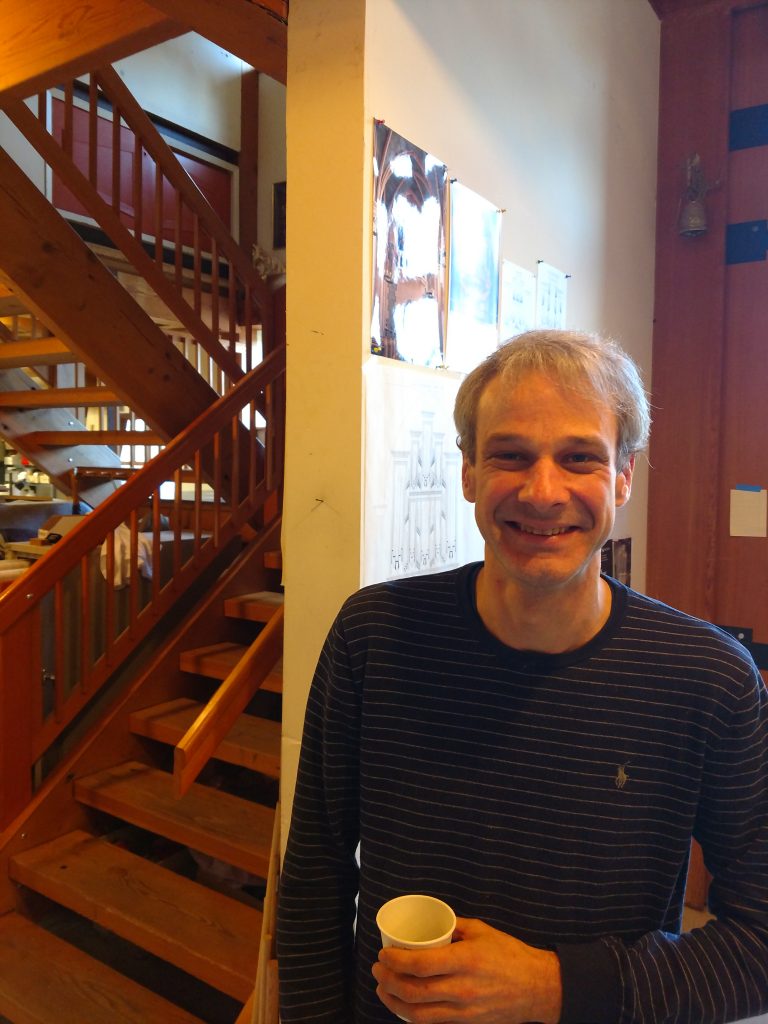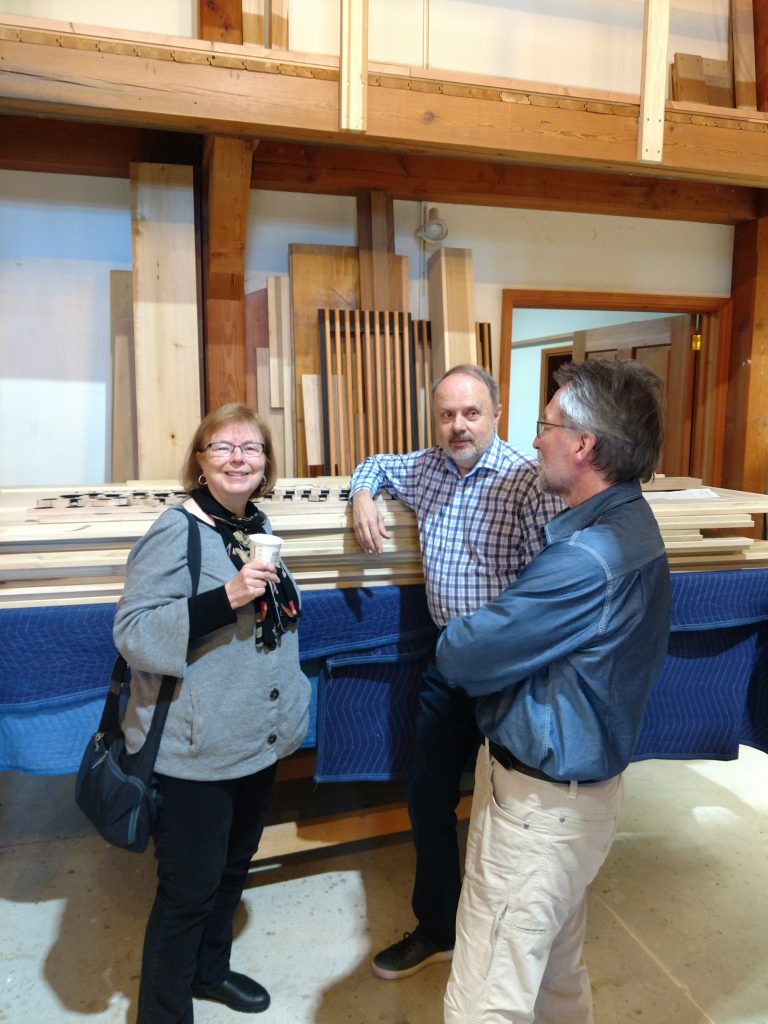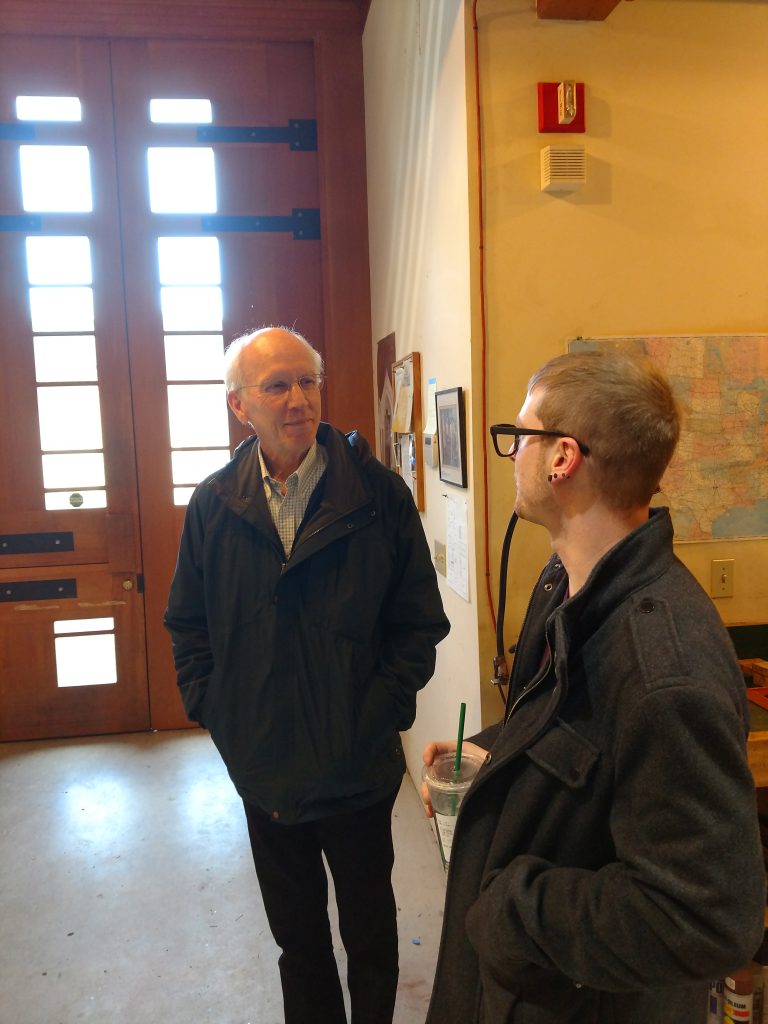Fritts Organs Opus 42 is an imposing instrument by any standard. It fills the Fritts workshop visually, reaching almost to the ceiling. It impresses the observer with its classical design, the beauty of its detail, its inlaid music desk and embossed front pipes.
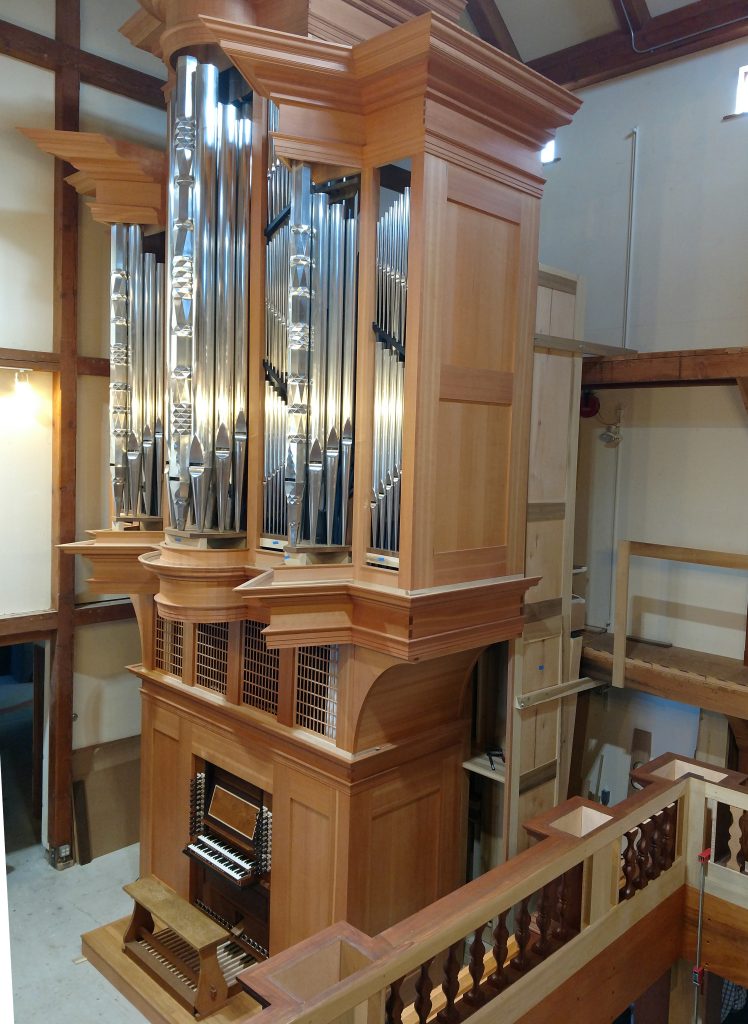
The organ is not yet finished. Only seven of the 37 stops are playing. The pedal doesn’t work yet. It has no working reeds. Yet a magical transformation took place in the room when AGO member David Dahl sat down to play A Mighty Fortress on the principal 8 foot stop, gradually adding 4 foot, 2 2/3, and 2 foot stops.
The Fritts team worked diligently to get the organ playable for the January meeting of the Tacoma Chapter of the American Guild of Organists. On January 12, 2019, along with several very proud Fritts employees and colleagues from the Seattle AGO chapter, Tacoma AGO members listened as Paul Fritts talked about the history and design of the organ.
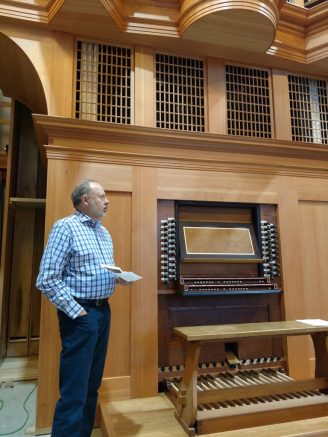
The story is bittersweet. Opus 42 is bound for First Lutheran Church in Loraine, OH, where it will replace Brombaugh Organs Opus 4, destroyed along with the church that housed it by an arsonist. The Brombaugh organ was groundbreaking in many respects, and its loss will leave a void in the organ world. Rather than rebuild the same building, the congregation bought new property and a new building; likewise, they would need a new organ.
The prospect of designing a new organ for a new building presented Paul Fritts with an opportunity to help meld a perfect match. He traveled to Loraine and met with the building committee, the architect, the acoustician, and others interested in the project. Paul successfully made his case that the building should be rectangular instead of square, and that it should be tall.
The church had already made the decision not to recreate the building, and not to attempt to recreate the Brombaugh organ. The Fritts organ was to be a creation in its own right. Yet Paul, who was familiar with Brombaugh Opus 4, wanted to pay homage to it in the new organ, and so designed it to be visually similar–pointed towers, a similar number of sections, and embossed pipes.
There are differences, though. The new organ has a swell division. Its case is made of fir, its keydesk of maple, part of which is heat treated in a vacuum in order to make it more stable. And, perhaps contributing to its startling clear and direct tone, all of the metal pipes are sand cast, including the reed resonators.
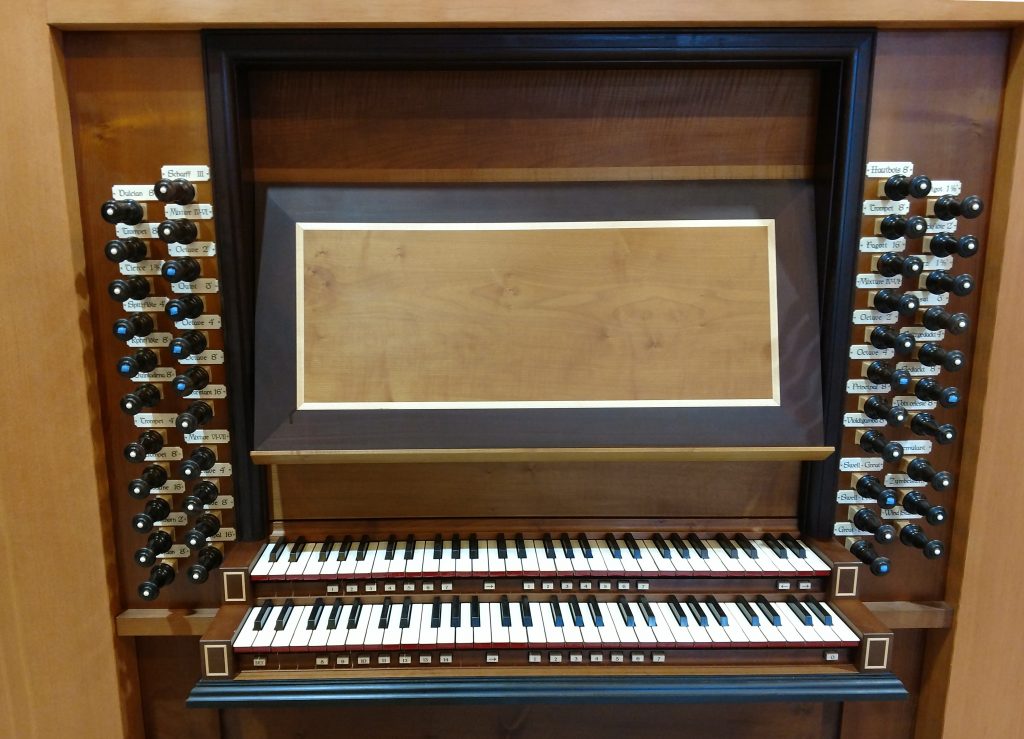
The Fritts shop is the only organ building shop in the country sand casting pipes. It was a gradual process. Paul Fritts and colleague Bruce Shull worked closely with the Flentrop Company on a reconstruction that featured sand cast pipes. The Fritts staff became believers, and now produce all of their pipes through this time-honored process.
Casting the pipes on a sand table causes the molten metal to cool faster, making it slightly more brittle, but producing a livelier sound. Bruce Shull, who voiced all of the pipes, describes a trade-off in which sand casting is a lot more trouble up front, but greatly reduces the amount of work that goes into voicing after the pipes are shaped.
Sand casting is not the only way in which the Fritts Shop has returned to early organ building traditions. They have analyzed metal from organ pipes that have survived the centuries, and used the same alloy combinations, which are still mostly tin, 5% lead, and trace amounts of elements such as copper, bismuth, and even arsenic. Interestingly, this historic pipe composition was not deliberate. In earlier centuries, it was not possible to purify metal such as it can be done today. Now, however, the metals are too pure and have to be “contaminated” with trace elements to match the composition of pipes that have stood for centuries. Lutheran Bishop Rick Jaech, in attendance, observed that there might be a life lesson in the fact that pipes collapse when they get too pure!
The organ is close to completion. The last major component to be added will be the pipe shades, being hand carved in Dresden, Germany. When the pipe shades arrive, the organ will be disassembled and shipped to Ohio, where the Fritts staff will reassemble it in its new home. It will take 5 or 6 weeks to complete the voicing and tuning. The relationship to the room has been planned very carefully. For example, the organ case is expanded in the back, and the walls of the church will meet the case. The extra room on each side houses pedal pipes.
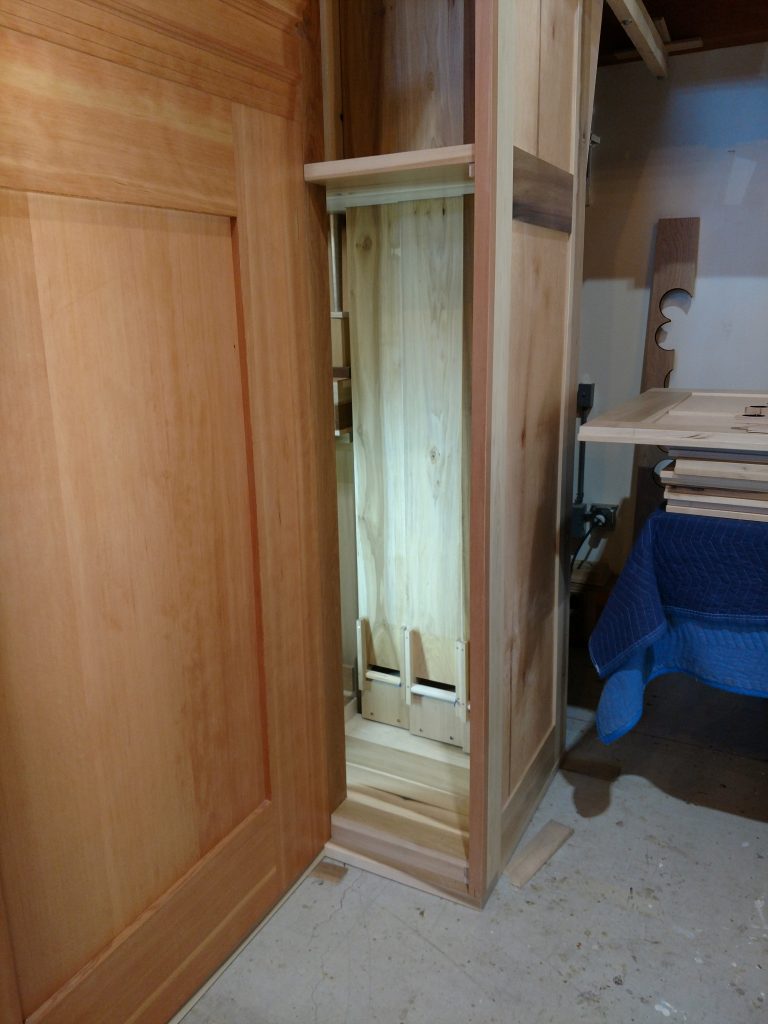
The new First Lutheran Church features a very live room, so the organ has been built on very low wind pressure–about 2 inches. The pipes are wide open, “singing as strongly as they can,” taking full advantage of the low pressure.
By the time the organ is assembled, most of the voicing will have already taken place previously, in the shop. There is still room for minor adjustments, even adjustments of the wind pressure. If necessary after hearing the organ in its permanent home, the wind pressure can be adjusted up or down by as much as 10 mm without adversely affecting the voicing.
Bruce Shull, the chief voicer, pointed out that the practice of voicing in the shop is also historical. In the sixteenth century, before extension cords and light bulbs, voicing in the case would have been done by candlelight. That would be difficult in many respects, not to mention what might happen if the candle fell over.
Having built the principal chorus using A Mighty Fortress, David Dahl demonstrated the flute pipes and various combinations using several other hymn tunes. His harmonizations were adventurous, but still tasteful by most standards.

Following Paul Fritts’ presentation and a lively question and answer period, members enjoyed refreshments and the chance to play an organ that will soon claim its place in history–not as a replacement for Opus 4, but as a new work of art that will bring its own beauty into the world.
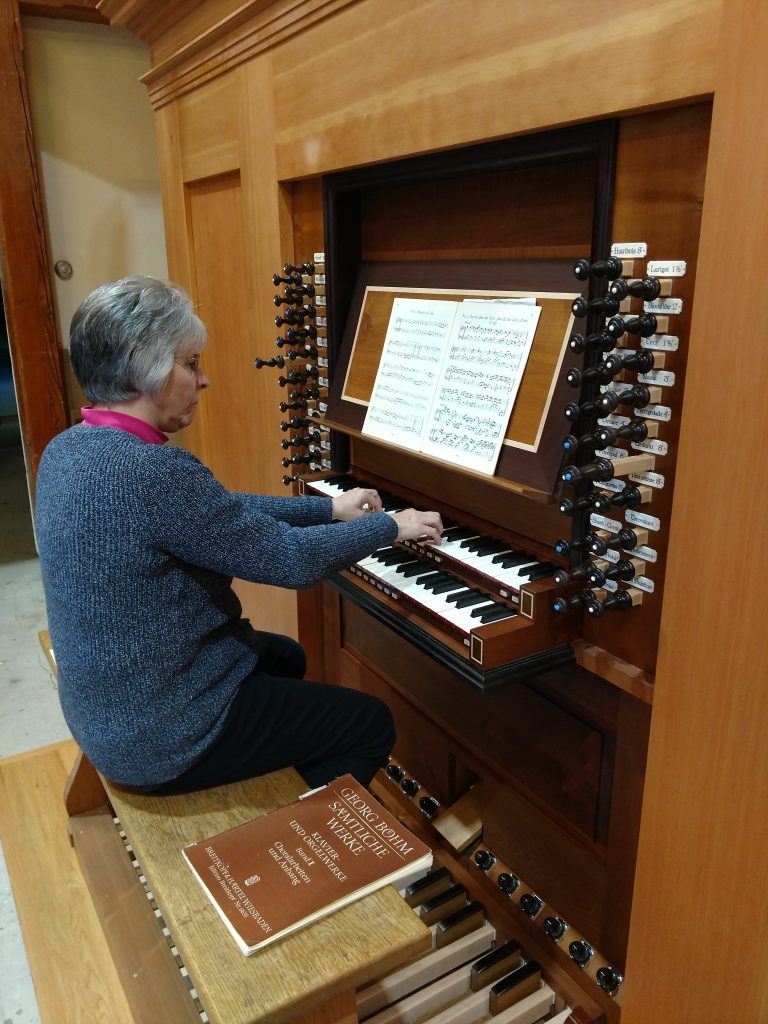
The organ specification is reproduced below.
Fritts-Opus-42-specification
